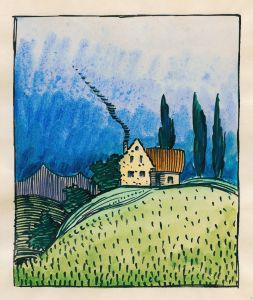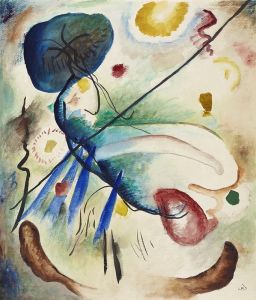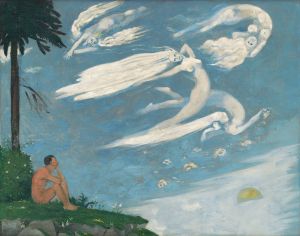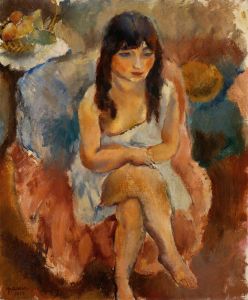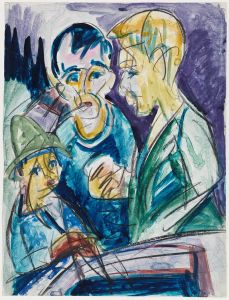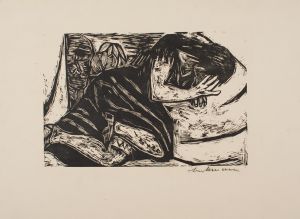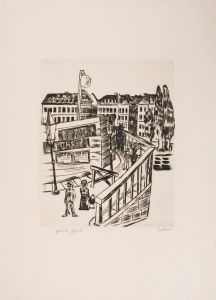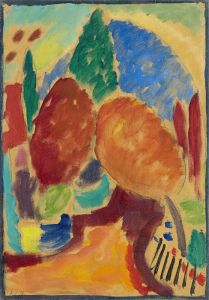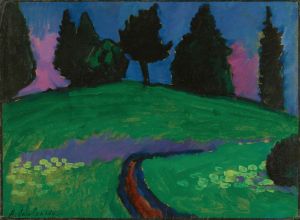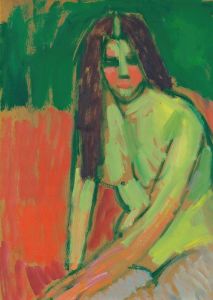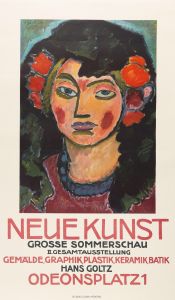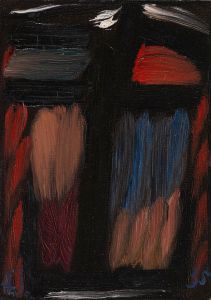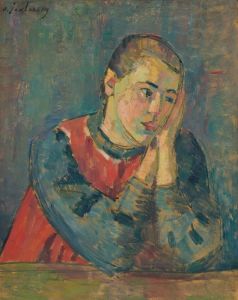
Gelbe Häuser
A hand-painted replica of Alexej von Jawlensky’s masterpiece Gelbe Häuser, meticulously crafted by professional artists to capture the true essence of the original. Each piece is created with museum-quality canvas and rare mineral pigments, carefully painted by experienced artists with delicate brushstrokes and rich, layered colors to perfectly recreate the texture of the original artwork. Unlike machine-printed reproductions, this hand-painted version brings the painting to life, infused with the artist’s emotions and skill in every stroke. Whether for personal collection or home decoration, it instantly elevates the artistic atmosphere of any space.
Alexej von Jawlensky, a Russian expressionist painter, created the artwork "Gelbe Häuser" (Yellow Houses) during a period marked by significant artistic exploration and development. Jawlensky was a prominent figure in the early 20th-century art scene, known for his vibrant use of color and bold forms. He was associated with the Expressionist movement, which sought to convey emotional experiences rather than physical reality.
"Gelbe Häuser" is a notable example of Jawlensky's work, reflecting his interest in color and form. The painting is characterized by its use of vivid yellows, which dominate the composition and give the work its name. Jawlensky's approach to color was influenced by his interactions with other avant-garde artists of the time, including Wassily Kandinsky and Gabriele Münter, with whom he was associated through the Munich-based group known as the Blue Rider (Der Blaue Reiter). This group was instrumental in the development of abstract art and emphasized the emotional power of color and form.
In "Gelbe Häuser," Jawlensky employs a simplified, almost abstract style to depict a row of houses. The forms are reduced to basic geometric shapes, and the perspective is flattened, a technique that draws attention to the interplay of colors and shapes rather than realistic representation. This approach is typical of Jawlensky's work during this period, as he sought to express spiritual and emotional truths through his art.
The painting reflects Jawlensky's interest in the spiritual and symbolic potential of color. He believed that colors could evoke specific emotions and had a profound impact on the viewer's psyche. This belief was shared by many artists of the Blue Rider group, who saw art as a means of transcending the material world and accessing deeper spiritual realities.
Jawlensky's work, including "Gelbe Häuser," was influenced by his Russian heritage and his exposure to Western European art movements. His style evolved over time, incorporating elements of Fauvism, with its bold colors and expressive brushwork, as well as aspects of Russian icon painting, which emphasized the spiritual and symbolic over the literal.
"Gelbe Häuser" is a testament to Jawlensky's ability to synthesize these diverse influences into a unique artistic vision. The painting is a vibrant example of his exploration of color and form, demonstrating his commitment to expressing the inner emotional landscape through art. Today, Jawlensky's work is celebrated for its contribution to the development of modern art, and "Gelbe Häuser" remains an important piece within his oeuvre, illustrating his innovative approach to painting and his enduring influence on the Expressionist movement.





